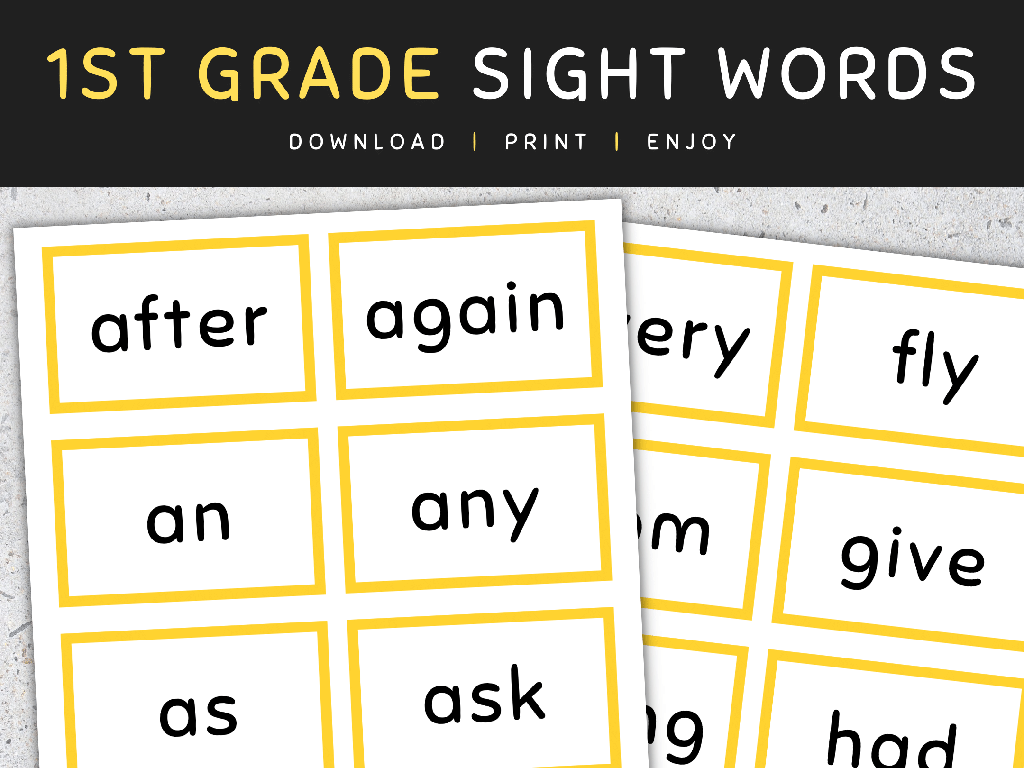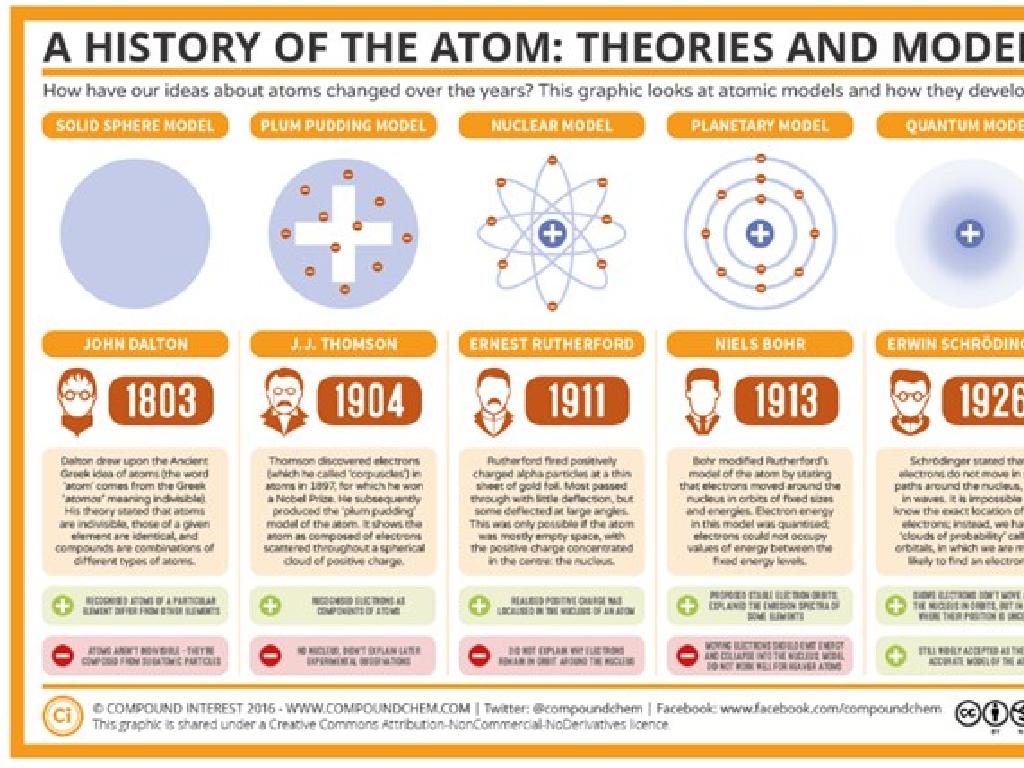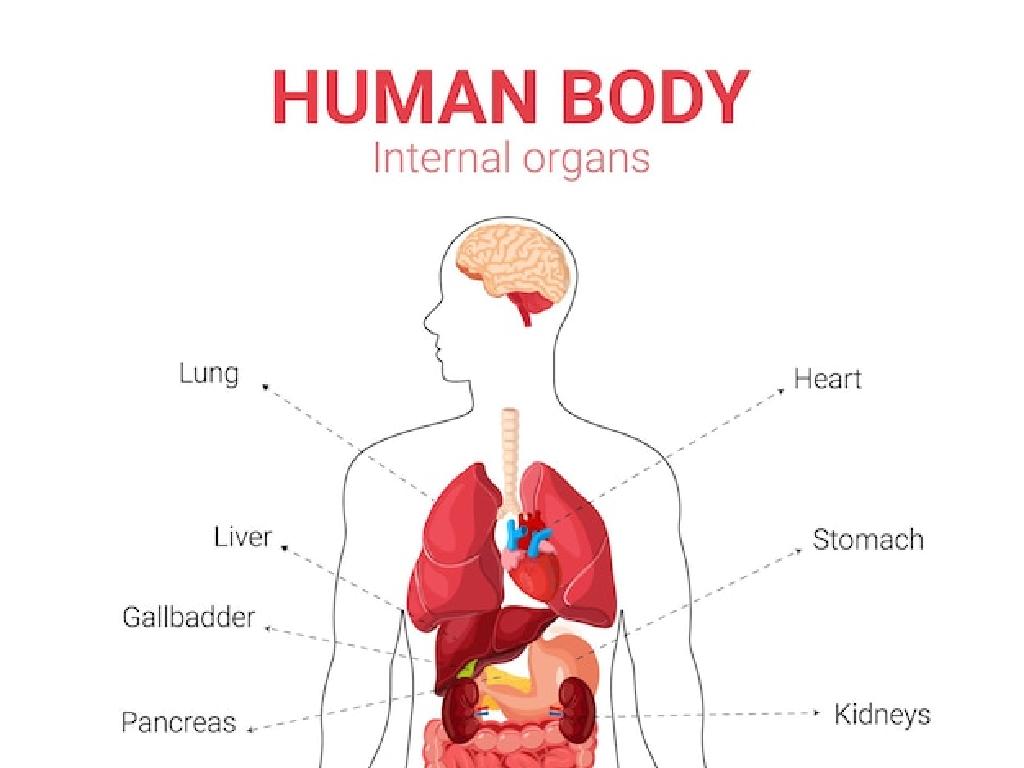Complete The Word With The Correct Digraph: Ph, Qu, Wh
Subject: Language arts
Grade: Second grade
Topic: Consonant Blends And Digraphs
Please LOG IN to download the presentation. Access is available to registered users only.
View More Content
Welcome to Digraphs!
– Discovering special sounds
– Understanding digraphs
– Two letters that make one sound, like ‘sh’ in ‘ship’
– Examples: ph, qu, wh
– ‘ph’ as in ‘phone’, ‘qu’ in ‘queen’, ‘wh’ in ‘whale’
– Practice with fun words
– We’ll complete words using ‘ph’, ‘qu’, ‘wh’
|
This slide introduces the concept of digraphs to second graders, emphasizing the idea that two letters can work together to make a single sound. Start by explaining what digraphs are and provide clear examples using common words that the students may already know. Engage the class by asking if they can think of any words with these sounds. Then, move on to practice activities where students complete words with the correct digraphs. This will help them recognize and use these digraphs in their reading and writing. Make sure to provide visual aids and repeat the sounds with the class to reinforce learning.
Exploring Digraphs: ph, qu, wh
– What’s a digraph?
– Two letters making one sound, like ‘sh’ in ‘ship’.
– Unique sound of digraphs
– The sound ‘ph’ makes is different from ‘p’ or ‘h’ alone.
– Digraphs’ position in words
– ‘wh’ can start words like ‘whale’, ‘ph’ can end words like ‘graph’.
– Practice with ph, qu, wh
|
Introduce the concept of digraphs to the students by explaining that a digraph is a pair of letters that come together to make a single, distinct sound. Emphasize that this sound is different from the sounds of each letter when they stand alone. Provide examples of digraphs at the beginning and end of words to illustrate their position. Engage the class with practice examples using ‘ph’, ‘qu’, and ‘wh’, and encourage them to think of more words that contain these digraphs. This will help them recognize and use these digraphs correctly in their reading and writing.
The ‘ph’ Sound in Words
– ‘ph’ digraph makes the ‘f’ sound
– Think of words with ‘ph’
– Like ‘elephant’, ‘dolphin’, or ‘graph’
– Example: ‘phone’
– ‘ph’ sounds like ‘f’ in ‘phone’
– Practice writing ‘ph’ words
|
This slide introduces the ‘ph’ digraph and its pronunciation, which is similar to the ‘f’ sound. Start by explaining what a digraph is a combination of two letters that create one sound. Then, provide the example of the word ‘phone’ to illustrate the ‘ph’ sound. Encourage students to brainstorm other words that contain the ‘ph’ digraph, such as ‘elephant’ and ‘dolphin’. You can make this interactive by having students come up to the board to write their words. For homework, ask students to find five words with the ‘ph’ sound and use them in sentences to reinforce their understanding.
The ‘qu’ Sound in Words
– ‘qu’ digraph makes ‘kw’ sound
– ‘qu’ is followed by ‘u’
– Example: ‘queen’
– Like ‘quack’ and ‘quick’
– Practice with ‘qu’ words
– Find words in a story with ‘qu’
|
This slide introduces the ‘qu’ digraph to second graders, emphasizing its unique ‘kw’ sound and the rule that ‘u’ always follows ‘q’. Start by pronouncing the sound for the students and then showing them the word ‘queen’ as an example. Explain that ‘queen’ starts with the ‘qu’ sound and is followed by ‘u’ as in all ‘qu’ words. Provide additional examples such as ‘quack’ and ‘quick’ and encourage students to listen for the ‘kw’ sound. For practice, ask students to look for ‘qu’ words in their favorite stories or provide a list of words for them to read aloud. This will help reinforce the concept and improve their phonetic skills.
The ‘wh’ Sound in Words
– ‘wh’ digraph makes ‘hw’ sound
– Usually at word’s start
– Example: ‘whale’
– ‘whale’ begins with the ‘wh’ sound
– Practice with ‘wh’ words
– Find words like ‘when’, ‘what’, ‘why’
|
This slide introduces the ‘wh’ digraph and its pronunciation, which sounds like ‘hw’. Emphasize that ‘wh’ is commonly found at the beginning of words and is an important sound for students to recognize and pronounce correctly. Use the word ‘whale’ as a clear example and encourage students to think of other words that start with ‘wh’. For the class activity, students can practice by identifying and writing down more ‘wh’ words from a given list or their reading material. This will help reinforce their understanding of the digraph and its use in the English language.
Practice Time: Digraph Sounds
– Find the right digraph for each word
– Words with missing letters will be shown
– Listen carefully for the digraph sound
– Digraphs ph, qu, wh make unique sounds
– Complete the words correctly
– Example: _ale (whale), _een (queen), _oto (photo)
|
This slide is for a class activity focused on practicing digraphs. Digraphs are combinations of two letters that make one sound. In this activity, students will be shown words with missing letters where a digraph should be. They will use their knowledge of the sounds that ‘ph,’ ‘qu,’ and ‘wh’ make to fill in the blanks. For example, for the word ‘_ale,’ students should recognize the ‘wh’ sound at the beginning and complete it as ‘whale.’ Encourage students to say the words out loud to help them determine the correct digraph. Prepare a list of words with missing digraphs for the activity and consider creating small groups or pairs for collaborative learning.
Digraph Matching Game
– Play a matching game with digraphs
– Match digraphs to pictures
– Find the ‘ph’, ‘qu’, ‘wh’ in words
– Work in teams on a word list
– Use teamwork to fill in missing digraphs
– Have fun learning digraphs!
|
This slide introduces a class activity focused on learning digraphs ‘ph’, ‘qu’, and ‘wh’. The activity is a matching game where students will work in teams to match digraphs to the correct pictures, reinforcing their understanding of how these digraphs are used in words. After matching, they will collaborate to complete a word list, filling in the missing digraphs for each word. This interactive approach encourages participation and makes learning fun. As a teacher, prepare a set of pictures and words that include these digraphs, ensure that each team has a set to work with, and facilitate the activity by guiding students as needed. Possible variations of the activity could include a digraph scavenger hunt or creating sentences with the completed words.
Wrapping Up: Digraphs Discovery
– Congratulations on learning digraphs!
– Practice digraphs with family and friends
– Try using ‘ph’, ‘qu’, ‘wh’ in new words
– Exciting story reading next class
– We’ll use ‘ph’, ‘qu’, ‘wh’ words in a fun story
– Keep up the great work at home
|
Today’s class was all about understanding and using digraphs ‘ph’, ‘qu’, and ‘wh’. As we conclude, praise the students for their hard work and encourage them to continue practicing at home to reinforce their learning. Suggest that they read books or play word games with their family to find and use words with these digraphs. Let them know that in the next class, we will be reading a story together that includes words with the digraphs they’ve learned, which will help them see how these sounds are used in context. This will also build anticipation for the next lesson and provide a practical application of their new skills.






